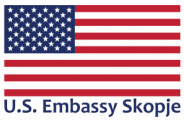RT put the crowd at 12,000 protesters; open-source evidence suggests it may have been more than 22,000 people
Large protests erupted in Moscow on July 20, 2019, but different media outlets reported vastly differing crowd sizes.
Protesters in Moscow gathered to demand that opposition candidates be allowed to register in the Moscow municipal elections, to be held in September. The protests were unsanctioned, but riot police did not disperse them immediately. Nonetheless, pro-Kremlin media outlets diminished the size of the crowd in their reporting.
Activists gathered when the authorities barred around 30 candidates from registering on the pretense that they had obtained invalid supporters’ signatures. Multiple Western media outlets, including BBC and Reuters, reported that at least 20,000 protesters gathered on July 20; Kremlin outlet RT, meanwhile, reported that only 12,000 protesters showed up. The Russian video news agency Ruptly, which belongs to the RT news network, published a video on YouTube that showed an overview of the crowd as people started to gather, suggesting that the crowd was on the smaller side.
Surfaced videos taken during the protests, however, revealed that the crowd was significantly larger and more dense than Ruptly had suggested.
A prescise crowd size estimate requires two main pieces of information: the crowd density, and clear boundaries of the crowd. This information allows for a precise estimate of the average size of the crowd using open source tools.
The density of the crowd can be estimated by counting the number of people in the crowd standing in one square meter. According to the Google Maps satellite imagery, the area between the two traffic marking lines seen in one of the photos is approximately 1.7 meters wide. At least four people can be clearly seen standing in the area. The same distance measured vertically suggested that at least four people were standing along the vertical axis, making the average density of the crowd less than two people per square meter.
The second factor needed for the crowd estimation was clear boundaries of where the crowd ended. The DFRLab geolocated the site of the protests to be Academician Sakharov Avenue in central Moscow. Despite the vast number of publicly available videos and photos from the protests, no photos capturing the full crowd in one picture had surfaced. A number of photos and videos clearly showed the boundaries of the crowd from the front, which was facing the stage, yet none of them captured the boundaries of the crowd from behind. One image posted by the Meduza media outlet suggested that the crowd stopped at least by the end of the last curved structure on the western side of the Academician Sakharov Avenue.
For visualization purposes, the crowd borders were marked on a satellite image with the yellow line marking the front end and the orange marking the back end of the crowd.
As the crowd density at the back of the crowd could have not been clearly determined, the density of 1.5 people per square meter was chosen in order not to inflate the size of the crowd.
According to the MapChecking tool, the visible crowd could have been up to 22,000 people. Since no drone footage showing the full size of the crowd has surfaced thus far, it is unclear if the crowd was any bigger. The picture did not offer any indications the crowd ended at the visible boundary. It may have stretched beyond that boundary, which would clearly contest the estimates provided by RT.
The unsanctioned protests that erupted on July 20 in Moscow were the largest and longest in Russia in a decade. The Kremlin’s patience began to wear thin during the second week, as the Russian police began cracking down on the protesters on Sunday, July 28. At least 1,500 protesters were detained on the first day, following brutal violence at the hands of the police. The DFRLab is currently investigating the outcome of the protests and looking into open source evidence of police brutality against the peaceful protesters.
This analysis was prepared by DFRLab.


